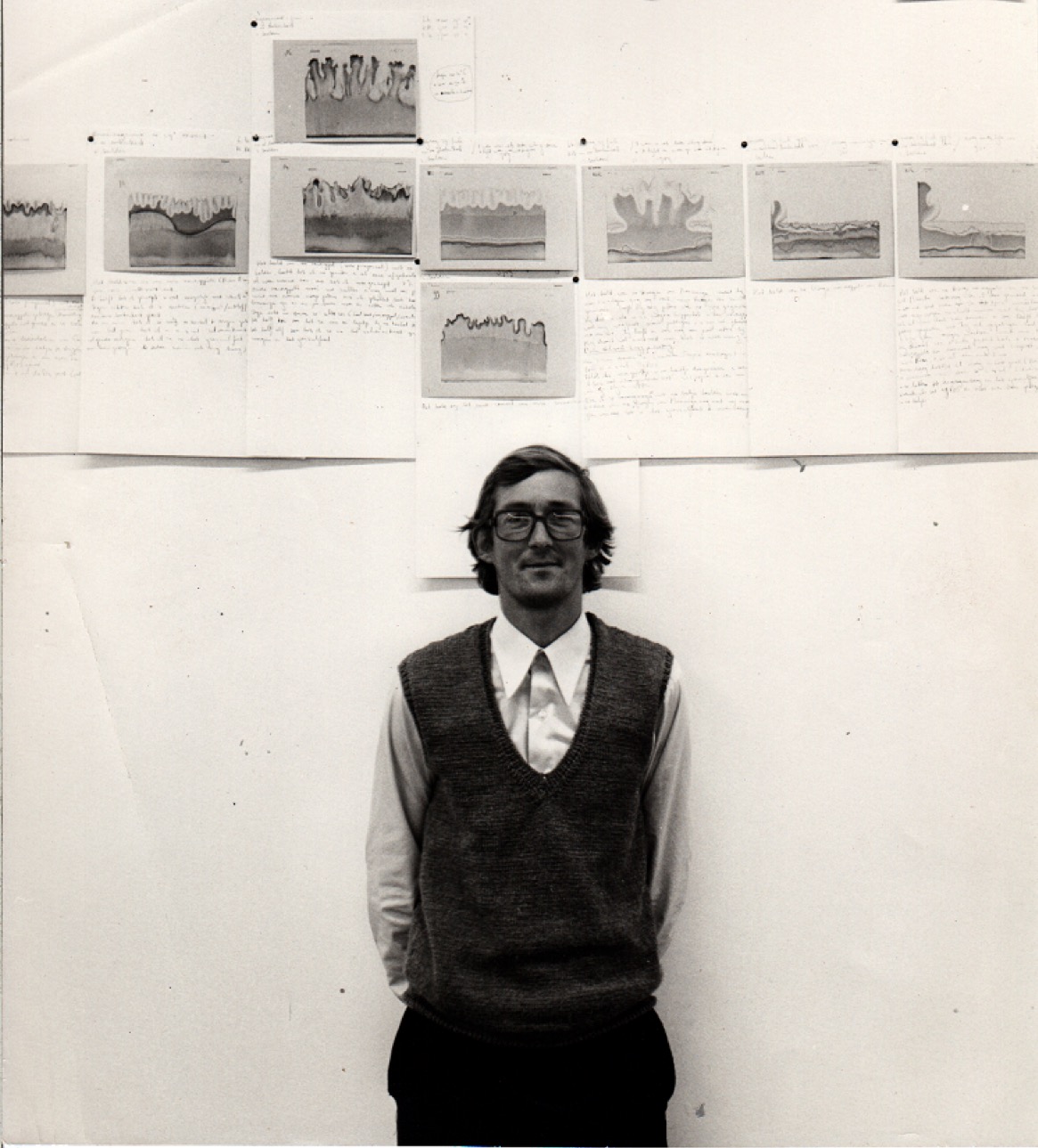Hans de Vries’ (1947, Broek-onder-Akkerwoude, NL) artistic approach is characterised by a conscious and close relationship to his environment. He was deeply inspired by nature and daily reality.
In the ‘60s and ’70s, the political attitude in the Western world was becoming more critical towards an ideology that viewed nature as an inexhaustible source of energy, food, spectacle and beauty. The declarations of the Club of Rome, the rise of the Provos and the hippie movement were a response to new and highly complex relationships between man and nature, which were all too often treated light-heartedly by politicians and industry.
The visual arts responded in an archaic way by recording and measuring the day-to-day changes in nature, witnessing and registering the world’s inherent beauty through a combination of notations and photography, and using prosaic methods for making instruments, building furniture and harvesting food. This was seen as a counteraction to industrialised society. Their art was anti-commodity, aiming at inclusion and commitment and showing a back-to-basics, hands-on mentality.
Hans de Vries (1947) concentrated on the study and registration of processes and appearances that occur in and are created by nature. De Vries was a close observer, an onlooker, an eyewitness, whose aim was to discern and document the relationship between man and his natural environment. His practice has been referred to as “micro- emotive art”, a term coined by the Italian artist Piero Gilardi. Micro-emotive art was art that arose from the interest in minimal sensations and experiences (micro-emotions) – the results of slow processes otherwise not readily perceived. De Vries’s practice was fully integrated in his daily life. He lived in the countryside and registered every detail of his domestic existence. Developments in nature were studied and phenomena one might consider superfluous, were highlighted. This accumulation of facts and observations has been captured in his publications – the artist books of Hans de Vries.
Although not trained as an artist, De Vries, self-designated as an artist, participated in 1971 in some high profile exhibitions like Sonsbeek Buiten de Perken (Sonsbeek Beyond the Pale), Park Sonsbeek, Arnhem (NL) and Binnen en Buiten het Kader (Inside and Beyond the Frame), Stedelijk Museum Amsterdam (NL). In 1978 he showed his work in the Dutch pavillion at the Venice Biennial as part of a group of four artists as the Dutch entry ‘Nature <-> Art’ to the Venice Biennial in 1978. After that he stopped his artistic practice and pursued with his farming practice. In the 1974-art-publication R.A.N. no.9 (Rotterdam Art News run by Jan Donia and Gosse Oosterhof) Hans de Vries was described as ‘the foremost Dutch representitive of an international trend which derives its material from ecology’. In 2016 he had a solo exhibition at Kunstverein, Amsterdam. We presented Hans de Vries afterwards, that same year, in a group show with two other important Dutch conceptual artists from the ‘70s: Douwe Jan Bakker (1943-1997) and Krijn Giezen (1939-2011). In 2017 Hans de Vries was part of our groupshow Spurensicherung, a German forensics term that means literally “to secure traces”. The title is drawn from an exhibition in 1974 at the Hamburger Kunstverein, curated by the art historian Günter Metken (1928, Germany – 2000, Libya), which included some of the most interesting artists from the early Seventies. He analyzed in the eponymous catalogue the art historical notions of that period.
His work is in the collection of the Zeeuws Museum in Middelburg (NL) and Muzeum Sztuki in Łódź (PL).
Click here to download the cv of Hans de Vries.

Hans de Vries in 1974, photo: John Stoel


